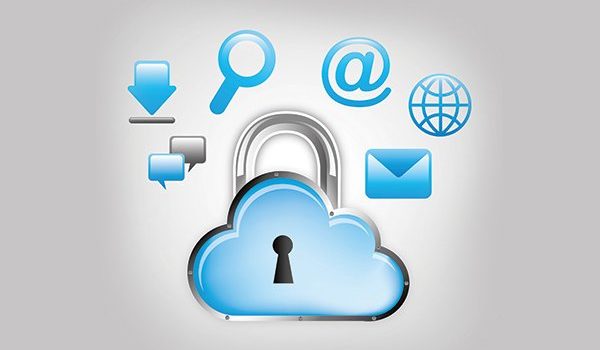Q. How do I talk to my providers about the documentation to support specific International Classification of Diseases, 10th Revision, Clinical Modification (ICD-10-CM) codes when most of them do not really know the codes, but they know the terminology? A. Now that we are 1 year into using ICD-10-CM codes, most expect the Centers for Medicare & Medicaid Services (CMS) to lift the grace period for allowing providers to assign unspecified diagnosis codes. It is …
Read More
Using Telemedicine to Improve Throughput and Build Market Share
Urgent message: Telemedicine can augment walk-in urgent care operations via provider load–balancing across centers in multiunit networks as well as direct-to-consumer platforms that expand a center’s geographic coverage, differentiate a center’s brand from that of competitors, and drive additional revenue. Introduction Given that the most common diagnoses seen in urgent care centers are low-acuity, low-touch conditions affecting the respiratory system, ears, nose, or throat—many of which can be treated via telemedicine— the looming question for …
Read More
Don’t Post That! Protecting Patient Privacy in the Age of Social Media
Urgent message: Using social media platforms helps your community get to know your urgent care center. But be sure that you protect your patients’ privacy when doing so. Introduction Social media has great utility for urgent care centers, providing invaluable opportunities to connect with the local community and offering a host of educational tools for providers and patients. The explosion of myriad social media platforms, however, has created a variety of new channels for exposure …
Read MoreNumber of Urgent Care Clinics by State (as of July 2016)
In July 2016, the Journal of Urgent Care Medicine (JUCM) concluded a count of unique urgent care centers across its print and digital subscription base. Estimates of urgent care centers can vary depending on whom you ask, because many different definitions are used to determine what constitutes an urgent care center. JUCM and the Urgent Care Association of America define urgent care centers as having all of the following characteristics: Walk-in or unscheduled care Expanded …
Read MoreICD-10-CM and ICD-10-PCS Changes Effective October 1, 2016
Because it has been 4 years since the last annual update of the International Classification of Diseases, 10th Revision, Clinical Modification (ICD-10-CM) and because 2016 is the first year for the Centers for Medicare & Medicaid Services (CMS) to make updates to ICD-10-CM, CMS made many edits to the classification’s code set. On October 1, 2016, International Classification of Diseases, 10th Revision, Procedure Coding System (ICD-10-PCS) will include 3651 new codes and 487 revisedcodes,1 and …
Read More
The Rise of Medical Scribes: A Fit for Urgent Care?
Urgent message: As urgent care operators look for ways to speed patient flow and raise visit revenue, medical scribes may be a solution for increasing provider efficiency and improving documentation accuracy. How this article helps you: provides information useful in deciding whether your center would benefit from hiring scribes. Introduction Urgent care is unique among health-care delivery models in its focus on providing quick turnaround. To get patients in and out of the center in …
Read MoreHIPAA-Compliant Disposal of Office Equipment Containing Personal Health Information
Urgent message: Urgent care centers must dispose of fully depreciated office equipment such as computers, copiers, fax machines, and telephones containing protected health information in a manner that complies with the Health Insurance Portability and Accountability Act. How this column helps you: gives you guidelines for protecting your patients’ privacy. Introduction Since 2009, 42 million patients have been affected by privacy breaches entailing their protected health information (PHI).1 Many of these breaches stem from the …
Read MoreTime Preference
In 2015, Merchant Medicine (Shoreview, Minnesota) released data from a detailed national study conducted in 2014 of U.S. patients’ preferences regarding retail clinics versus urgent care clinics versus primary-care physicians’ offices. The survey involved more than 2,000 adults between the ages of 18 and 54 years and was conducted by Sparks Research and Merchant Medicine on behalf of DXM Marketing Group. Urgent care is still sometimes viewed as being only for nights and weekends, but …
Read MorePlantar Warts, Digital Nerve Block in Lacerations, and Established Patients
Q. We had a patient present with 12 plantar warts. The provider used liquid nitrogen to freeze all 12 of the warts. What code should I bill for this procedure? A. In this case, you would bill Current Procedural Terminology (CPT) code 17110, “Destruction (e.g., laser surgery, electrosurgery, cryosurgery, chemosurgery, surgical curettement) of benign lesions other than skin tags or cutaneous vascular proliferative lesions; up to 14 lesions.” Use only code 17110 once because the …
Read MoreGuns and Urgent Care: How to Respond to Evolving Open-Carry and Concealed-Carry Laws
Urgent message: In the midst of the controversy in the United States surrounding the right to bear arms and concealed-carry laws, the medical field has also been wrestling with the issue. Some patients, facility personnel, and facility visitors will carry weapons. Thus, it is important that urgent care managers be prepared by identifying which issues regarding weapons they should focus on and what they and their personnel may be able to do when an encounter involves a weapon. Guns in …
Read More